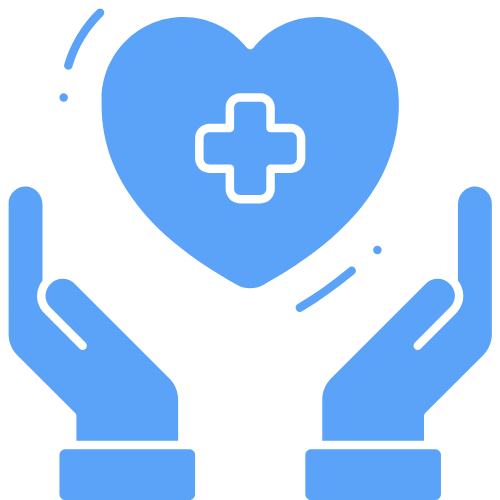Effective counseling sessions integrate evidence-based frameworks like cognitive-behavioral therapy, person-centered approaches, and solution-focused techniques to support your therapeutic progression. You’ll experience structured interventions that combine agenda setting, strengths-based assessments, and future-oriented problem resolution. Your counselor will utilize proven methods including miracle questions, scaling techniques, and cognitive restructuring to facilitate meaningful change. Exploring these therapeutic approaches can illuminate your path in the direction of psychological growth and personal development.
Core Elements of Cognitive-Behavioral Sessions

While cognitive-behavioral therapy sessions can vary in specific content, they rely on consistent core elements that create an effective therapeutic framework. You’ll start with a strengths-based assessment and mood check to establish baseline functioning, followed by collaborative agenda setting that prioritizes your current concerns. This structure supports a transdiagnostic case conceptualization approach. Automatic thoughts significantly influence both emotions and behaviors during the therapeutic process. The approach typically requires 12-20 sessions to achieve meaningful therapeutic outcomes.
Your sessions will incorporate cognitive restructuring techniques to address distorted thinking patterns, while behavioral activation and exposure methods target specific symptoms. Building empathy and trust is essential for developing a meaningful therapeutic bond. You’ll engage in systematic progress monitoring through structured recording and behavioral experiments, helping validate therapeutic hypotheses. Regular homework review reinforces skill development between sessions, and mindfulness practices augment your present-moment awareness. Throughout treatment, you’ll participate in shared decision-making while working toward measurable behavioral objectives that align with your personal goals.
Person-Centered Therapeutic Frameworks
Although person-centered therapy differs from more directive approaches, it relies on specific therapeutic conditions that create transformative change through genuine human connection. As a counselor, you’ll establish a compassionate presence through core conditions including unconditional positive regard, empathic understanding, and congruence. Rather than interpreting or directing, you’ll serve as an active collaborator who reflects and validates your client’s experiences. The approach has been extensively researched with studies showing positive outcomes in therapeutic relationships. This therapeutic model was developed by Carl Rogers who revolutionized psychology by breaking away from traditional psychoanalysis.
Your effectiveness depends on maintaining authenticity while demonstrating deep empathy through active listening and reflective techniques. This approach emerged as a revolutionary method in the 1950s in America. You’ll support your client’s natural movement in the direction of self-actualization by fostering a non-judgmental environment where they can safely investigate their phenomenological experience. This framework shifts the locus of evaluation inward, enabling clients to trust their organismic valuing process and develop greater self-understanding through collaborative dialogue.
Solution-Focused Brief Counseling Approaches

Solution-focused brief therapy’s miracle questions help you envision your ideal future outcomes while establishing concrete, measurable goals for counseling success. You’ll engage in future-focused problem resolution by identifying specific actions and behavioral changes that lead toward your desired state, rather than analyzing past difficulties. Through scaling techniques, you’ll track your progress numerically, which allows both you and your counselor to assess improvements and adjust therapeutic strategies as needed. A strong therapeutic alliance develops naturally as you work together to define problems in terms of achievable solutions. The approach highlights your existing strengths to build effective solutions for current concerns. This therapeutic approach empowers you to be the expert in your life while working collaboratively with your counselor to achieve meaningful change.
Goal-Setting Through Miracle Questions
How can counselors harness the transformative power of miracle questions to facilitate effective goal-setting? You’ll find that this solution-focused technique shifts clients from problem-saturated thinking to solution-oriented perspectives through strategic visualization. By asking clients to imagine waking up to find their problems resolved, you’re engaging in client-centered goal setting that crystallizes concrete, observable outcomes.
When you combine miracle questions with scaling techniques, you’ll help clients map their progress from current states to desired outcomes. This hope-enhancing visualization strengthens therapeutic engagement while identifying specific behavioral markers of success. Developed by de Shazer and Berg, this approach revolutionized brief therapy by emphasizing solutions over problems. The technique’s emphasis on empowering client futures cultivates lasting motivation for change. Providing end-session feedback helps reinforce the client’s progress and emphasizes useful actions they can take toward their goals. You can amplify effectiveness by following miracle questions with exception-focused inquiries about times when problems were less severe, reinforcing clients’ existing coping strategies and building momentum toward achievable goals.
Future-Focused Problem Resolution
When counselors employ future-focused problem resolution techniques, they accelerate therapeutic progress by shifting attention from historical patterns to achievable solutions. Through strengths-based interventions, you’ll identify periods when problems were less severe, revealing effective coping strategies that can be replicated. This approach emphasizes your existing capabilities rather than dwelling on deficits. The therapeutic process creates a collaborative environment that empowers clients to actively participate in their own healing journey. The approach relies heavily on language-based interactions to help clients develop and achieve their envisioned solutions.
Change is inevitable and transformation occurs naturally, making this counseling approach particularly effective at harnessing ongoing developmental processes. Strengths-based goal setting incorporates small, observable behavioral changes while building upon your demonstrated resilience. You’ll practice “do one thing different” exercises that create immediate feedback loops, reinforcing your capacity for self-directed change. By presupposing positive outcomes through solution-focused language, you’ll develop clearer visions of post-problem scenarios. This future-oriented framework validates your expertise in crafting solutions while systematically expanding your problem-solving toolkit through manageable, incremental steps.
Scaling Progress and Success
Measuring therapeutic progress through systematic scaling techniques provides empirical validation of solution-focused interventions, with research showing 45% of clients achieving their goals and a supplementary 32% demonstrating meaningful improvement. Progress scaling methods effectively track client advancement, though effect sizes remain modest at 0.11 for specific problem domains.
| Progress Indicator | Success Rate |
|---|---|
| Goals Fully Met | 45% |
| Partial Progress | 32% |
| Limited Change | 23% |
You’ll find success tracking most effective when implementing structured measurement protocols at regular intervals. While the small effect size suggests room for refinement in scaling methodologies, the combined 77% positive response rate validates the utility of systematic progress monitoring in solution-focused therapeutic contexts.
Stage-Based Individual Session Structure

Successful individual counseling sessions follow a systematic, stage-based structure that optimizes therapeutic outcomes through intentional progression. You’ll need to establish therapeutic alliance cultivation through clear communication, structured norms, and active listening during the initial phase. This foundation enables effective client-centered needs assessment as you move forward.
The structure then flows through distinct stages: problem exploration using the “5 Ws” methodology, goal-setting with SMART criteria, intervention implementation focusing on evidence-based strategies, and progress monitoring with standardized tools. Each stage builds upon the previous one, creating a cohesive therapeutic path. You’ll find that this systematic approach helps maintain session focus while allowing flexibility to address emerging client needs. Regular progress reviews guarantee you’re meeting therapeutic objectives and adapting interventions as needed.
Psychodynamic Exploration Methods
Building upon structured session formats, psychodynamic exploration methods offer deeper access to clients’ unconscious processes and emotional patterns. Through specialized techniques focused on unconscious material exploration, you’ll help clients uncover repressed emotions and unresolved conflicts driving their current behaviors. These methods amplify client self-awareness by linking past experiences to present challenges.
Psychodynamic exploration unlocks deeper awareness by connecting unconscious patterns to present behaviors, revealing hidden emotional drivers beneath the surface.
Key approaches include:
- Free association to surface spontaneous thoughts and identify emotional patterns without censorship
- Dream analysis to decode personal symbolism and reveal hidden fears or motivations
- Projective techniques to examine responses to ambiguous stimuli, exposing underlying attitudes
As a collaborative guide, you’ll help clients bridge conscious awareness with subconscious drivers while building trust through empathetic exploration. This process facilitates breakthrough insights and sustainable behavioral change.
Crisis Response Session Guidelines
When conducting crisis response sessions, you’ll need to begin with a thorough safety assessment protocol that evaluates immediate risks, including suicidal ideation, self-harm behaviors, and medical emergencies. Your immediate intervention steps should follow a structured framework like Roberts’ seven-stage model, focusing on establishing rapport and developing concrete safety plans with clear action steps. You must coordinate follow-up care by connecting clients to appropriate resources across multiple support levels, from primary social networks to professional mental health services.
Safety Assessment Protocol
A thorough safety assessment protocol forms the foundation of effective crisis response sessions, integrating structured risk evaluation tools with adaptable intervention strategies. When conducting risk identification procedures, you’ll need to utilize validated instruments like the Columbia-Suicide Severity Rating Scale (C-SSRS) while implementing ongoing monitoring strategies through continuous data collection.
- Conduct structured interviews with standardized questions about suicidal ideation, past behavior, and protective factors, ensuring detailed documentation of responses
- Implement direct safety inquiries and means assessments, explicitly discussing access to lethal methods and developing restriction plans
- Establish clear documentation protocols for tracking intervention effectiveness through feedback loops and regular assessment reviews
These evidence-based protocols enable you to make informed clinical decisions while maintaining systematic crisis response procedures aligned with best practices.
Immediate Intervention Steps
During crisis response sessions, effective intervention requires systematic implementation of immediate stabilization steps while maintaining clinical awareness of escalation risks. You’ll need to establish rapport quickly through active listening and empathetic validation while evaluating the client’s immediate safety needs.
Begin with immediate stabilization techniques, including grounding exercises and systematic calming strategies. Apply crisis prevention strategies by identifying triggers through open-ended questioning and mapping escalation patterns. You’ll want to document key dimensions of the crisis while implementing environmental adjustments to reduce stimulation.
Develop collaborative action plans that incorporate accessible coping mechanisms and support networks. Connect clients with community resources and crisis hotlines, ensuring continuity of care. Schedule follow-up sessions to maintain engagement and reinforce positive behavioral changes through structured skill-building exercises.
Follow-Up Care Planning
Systematic follow-up care planning forms the cornerstone of effective crisis response protocols. Through thorough follow-up planning, you’ll establish structured timelines for client check-ins, typically within 24-72 hours post-crisis, while implementing client-centered resource linkage to guarantee continuity of care.
Develop individualized safety plans incorporating coping strategies, emergency contacts, and culturally-appropriate community resources
Document standardized assessments tracking risk levels, intervention outcomes, and evolving client needs through coordinated care protocols
Establish clear communication channels between providers while empowering clients through collaborative goal-setting and self-monitoring techniques
Your follow-up strategy should prioritize strengths-based approaches, integrate feedback loops for quality improvement, and maintain detailed documentation aligned with policy requirements. This systematic approach optimizes crisis response effectiveness while supporting sustainable client recovery through evidence-based practices.
Mindfulness-Based Cognitive Techniques
Mindfulness-Based Cognitive Therapy (MBCT) integrates traditional cognitive techniques with mindfulness practices to amplify therapeutic outcomes in individual counseling sessions. You’ll find that incorporating compassion focused exercises alongside MBCT strengthens therapeutic alliance development while addressing barriers common to group participation formats.
Core techniques emphasize mindfulness meditation and cognitive decentering, enabling you to observe thoughts without judgment. Research shows significant improvements in stress reduction and mindfulness levels, particularly when implementing regular guided meditation practices. You’ll utilize open-ended questions and non-judgmental dialogue to help clients develop present-moment awareness and challenge negative thought patterns.
The approach demonstrates marked success in reducing depression, anxiety, and rumination, with heightened emotional regulation outcomes. You can adapt these techniques through flexible session structures, including online platforms and hybrid models for sustained practice.
Frequently Asked Questions
How Long Should Breaks Be Between Individual Counseling Sessions?
You’ll want to maintain 10-15 minute breaks between individual counseling sessions to optimize your therapeutic effectiveness. This session duration aligns with cognitive load theory and supports proper documentation time. While scheduling flexibility allows for adjustments, research shows these intervals help prevent burnout and maintain consistent care quality. You can extend breaks for complex cases, but shorter breaks generally balance your mental fatigue and productivity while ensuring accurate record-keeping.
What Strategies Help When Clients Become Resistant to Homework Assignments?
When you encounter homework resistance, reframe assignments as “practice tasks” or “life experiments” to reduce stigma. You’ll want to engage in collaborative goal setting by linking tasks directly to your client’s personal objectives. Focus on providing clear written instructions and rationales for each assignment. You can also troubleshoot obstacles together, adjust difficulty levels based on feedback, and monitor early adherence patterns to identify and address resistance promptly.
How Can Counselors Maintain Professional Boundaries While Showing Genuine Empathy?
You can maintain professional boundaries while showing empathy by combining objective empathy with clear limits. Focus on building rapport through active listening and validation, while maintaining objectivity in your responses. Set consistent session parameters and communicate boundaries upfront. When you’re emotionally present but professionally distant, you’ll create a safe therapeutic environment that balances genuine care with appropriate boundaries. Document all interactions to guarantee accountability.
When Should Counselors Refer Clients to Group Therapy Instead?
You should refer clients to group therapy when their needs align with group therapy benefits, such as peer support and shared learning experiences. Consider this option if your clients would benefit from developing interpersonal skills, need normalization of their experiences, or could gain from collective problem-solving. The client-counselor fit assessment should indicate they’re capable of meaningful group participation and aren’t experiencing acute crises requiring intensive individual attention.
What Are the Signs That a Therapeutic Approach Isn’t Working?
You’ll notice several key indicators when a therapeutic approach isn’t working. The most obvious sign is a lack of progress over multiple sessions, where you’re not seeing measurable improvements in symptoms or behavior. Watch for client discomfort with the chosen techniques, frequent cancellations, or resistance to homework assignments. Pay attention if standardized assessments show stagnant scores, or if your client expresses frustration with the current direction of therapy.
















